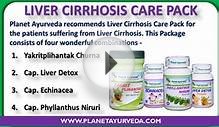
The liver is the largest glandular organ in the body, and has more functions than any other human organ. A person's entire blood supply passes through the liver several times a day, and at any given time there is about a pint of blood there.
The Liver has a pivotal role in human metabolism.
- The liver produces and secretes bile (to be stored in the gallbladder until needed) that is used to break down and digest fatty acids.
- It also produces prothrombin and fibrinogen, both blood-clotting factors, and heparin, a mucopolysaccharide sulfuric acid ester that helps keep blood from clotting within the circulatory system.
- The liver converts sugar into glycogen, which it stores until the muscles need energy and it is secreted into the blood stream as glucose.
- The liver synthesises proteins and cholesterol and converts carbohydrates and proteins into fats, which are stored for later use.
- It also produces blood protein and hundreds of enzymes needed for digestion and other bodily functions.
- The liver also produces urea, while breaking down proteins, which it synthesises from carbon dioxide and ammonia. It is eventually excreted by the kidneys.
- The liver also stores critical trace elements such as iron and copper, as well as vitamins A, D, and B12.
- The liver is also responsible for detoxifying the body of poisonous substances by transforming and removing toxins and wastes. There are five main sources of body toxins and wastes that the liver deals with: toxins from food (traces of pesticides, preservatives)and alcohol; toxins from outside (drugs, adulterants, and environmental pollutants); internally produced chemicals, such as hormones, that are no longer needed; nitrogen-containing waste left over from protein re-use; and energy production. These toxins and wastes are converted into less harmful substances by the liver and then eliminated from the body.
Because of the significant role the liver plays in maintaining our health, we must do all we can to keep it functioning properly.
Symptoms of a "sluggish liver"/ Liver diseases
These are fatigue, general malaise, digestive problems, blood sugar regulation disorders (such as hypoglycaemia), high cholesterol, psoriasis, allergies and chemical sensitivities and constipation. Extreme cases of liver problems would be jaundice, hepatitis and cirrhosis.
In this article, we'll review the most common liver disease - hepatitis and cirrhosis. Then will see what Ayurveda can offer for the protection of this vital organ and survey Ayurvedic treatment of liver disease.
Hepatitis
Among the many diseases that can affect the liver the most common is 'viral hepatitis' (Inflammation of liver caused by viral infection). Hepatitis can be caused by drugs, viruses, bacteria, mushrooms, parasites like amoebas or giardiasis. The most common hepatitis viruses affecting the liver are named for letters of the alphabet: hepatitis A, hepatitis B, hepatitis C, hepatitis D, and hepatitis E.
Hepatitis A - takes 14 to 21 days after infection to cause symptoms. It is transmitted through food.
Once infected with HAV, some symptoms such as dark yellow urine and fatigue will begin to appear within 25 days.
Hepatitis B - is on the increase world-wide. It is transmitted through direct contact with blood, serum, saliva, faeces, urine, and sexual contact.
Hepatitis C - is a truly serious disease with no known effective treatment. It is transmitted through blood and body fluids in transfusions, injections, the sharing of IV needles with drug users, and possibly by sexual contact with exposed partners.
Hepatitis D - only occurs in the presence of Hepatitis B virus
Hepatitis E - is another common type of hepatitis in developing countries. It occurs in epidemics. The infection route for it is faecal-oral, the same as the route for Hepatitis A virus; therefore, again, you must be very careful in what you eat and drink.
Treatment of Hepatitis
Usually Hepatitis A is self-limiting. Most of the Hepatitis A virus patients will return to normal in between four to six weeks time. The antibodies that the body's immune system develops kill the infection and also produce immunity to Hepatitis A virus
But with Hepatitis B virus and Hepatitis C virus, many people will go into a chronic phase that leads to chronic phase. With chronic HBV and HCV, 30% of patients develop cirrhosis of the liver or hepatocellular carcinoma.
RELATED VIDEO












